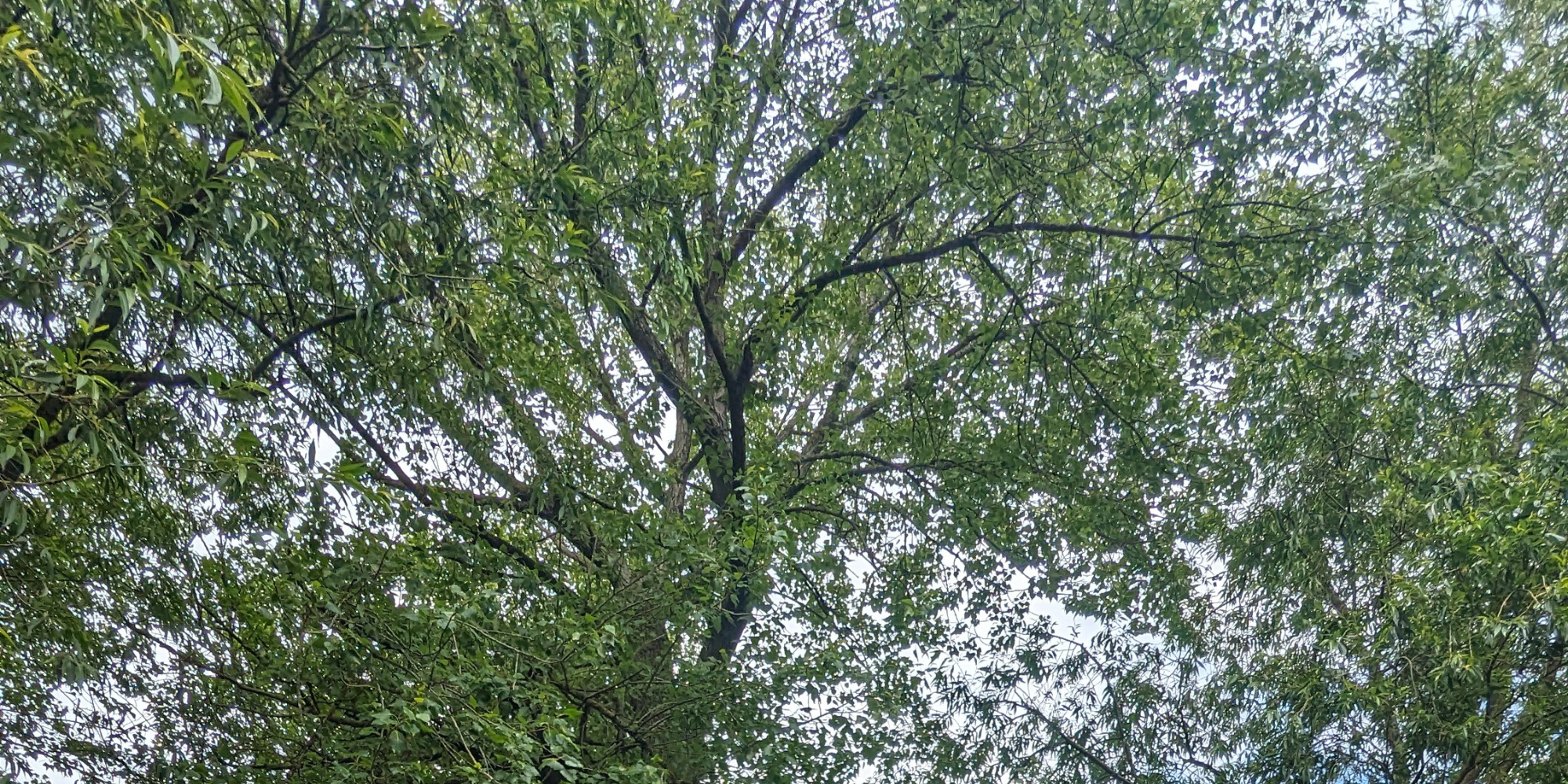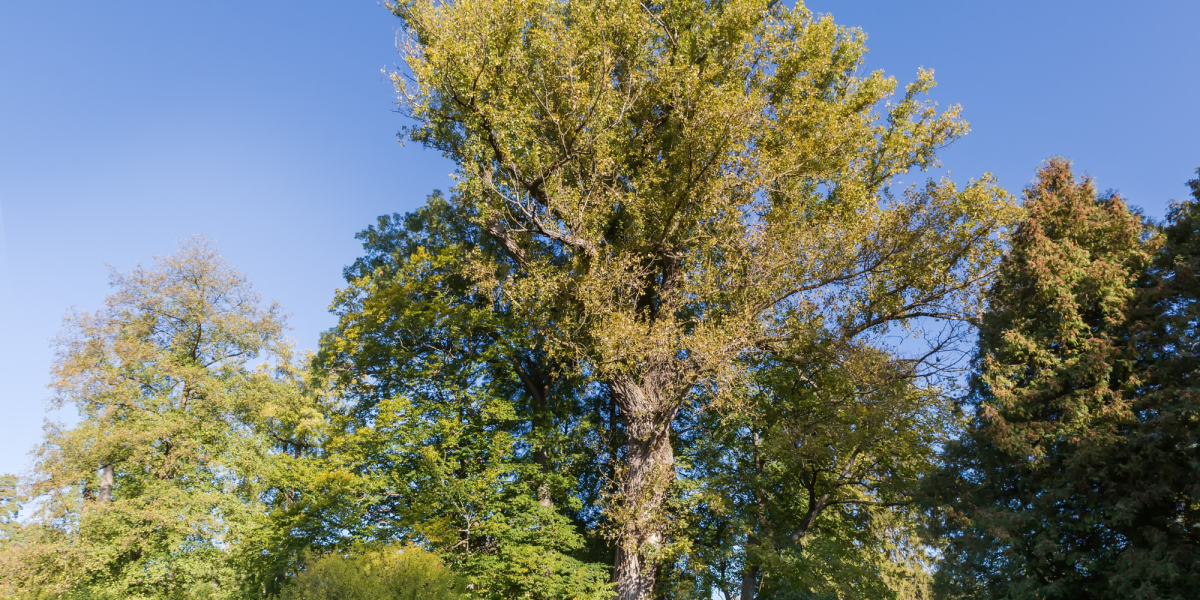
Species Name: Populus nigra
The black poplar gets its name from the dark, rugged appearance of its bark, which can often seem almost black. This majestic tree can grow to 30m tall and live for 200 years. Its long lifespan and towering stature make it a significant presence in the landscape.
Wild black poplar (betulifolia) is a rare variant of the black poplar. Cultivated species such as lombardy poplar (italica), are relatively common but lack the charm of our native wild ones. There are active and progressing conservation efforts to boost the stock of native poplars, ensuring these iconic trees remain part of our landscape for generations to come.
The bark of the black poplar is thick, dark brown (almost black) in colour and features numerous fissures and burrs.
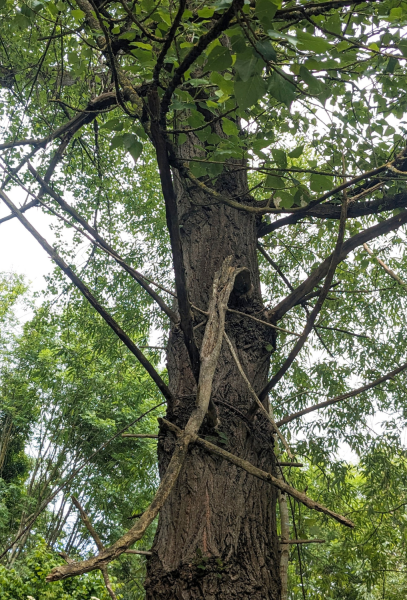
The leaves are shiny, green, and heart-shaped, tapering into long tips and have a subtle balsam-like scent.
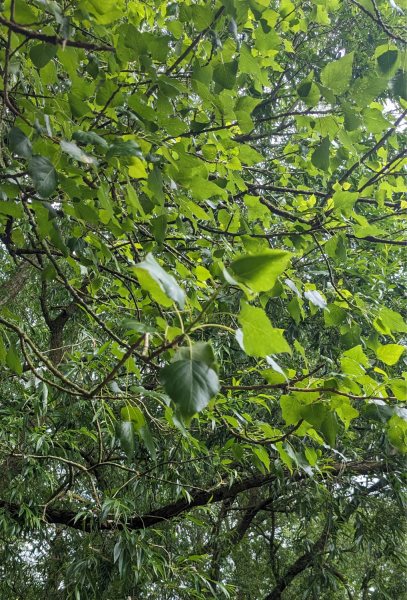
Female catkins, once wind-pollinated, transform into fluffy, cotton-like seeds that disperse by late summer.
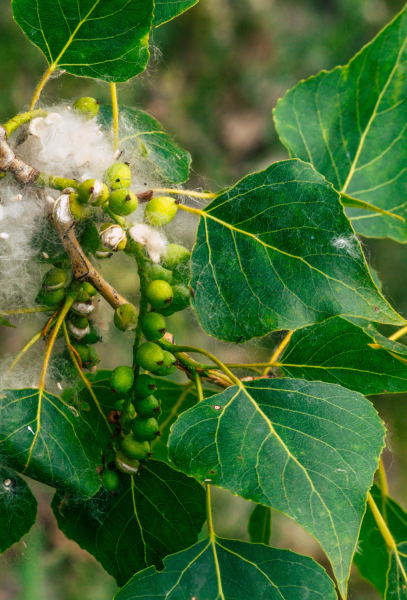
The black poplar tree is native to northwestern Europe. In the UK, it is a declining species, rare and often found growing in isolation. It thrives in damp conditions, particularly near ditches and floodplains.
In Greek mythology, the black poplar is linked to the tragic story of Phaeton, who lost his life attempting to steer Apollo’s chariot. Overcome with grief, Phaeton's sisters were transformed into black poplars by the gods. Additionally, folklore claims the fallen red male catkins resemble the Devil’s fingers and bring misfortune if picked up.
Known for its natural springiness and shock resistance, black poplar was traditionally used for making cart wheels and wagon bases. Its fire-resistant properties made it a preferred choice for floorboards in the era of paraffin lamps. The tree was also coppiced or pollarded to produce materials like thatching spars, bean poles, clothes pegs, and woven fruit baskets.
The black poplar serves as a host plant for various moth caterpillars, including the hornet moth, wood leopard moth, poplar hawk-moth, and figure of eight moth. Its catkins are an early source of pollen and nectar for bees and insects, while its seeds provide food for birds.
Only about 7,000 wild black poplar trees remain in Britain, and of these, a mere 600 are female.
